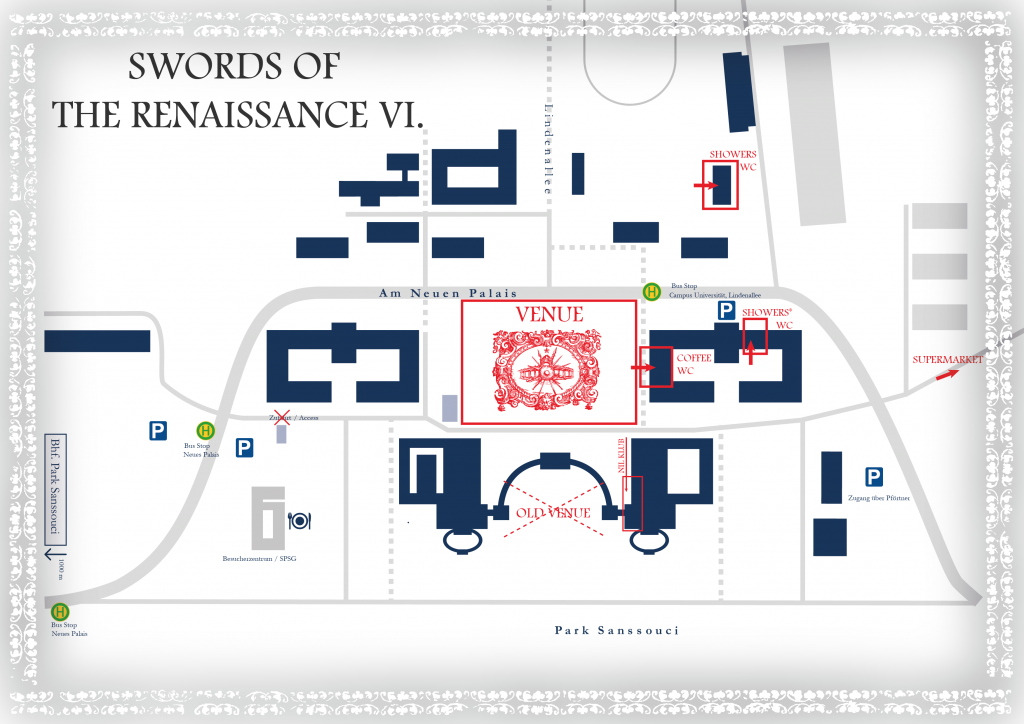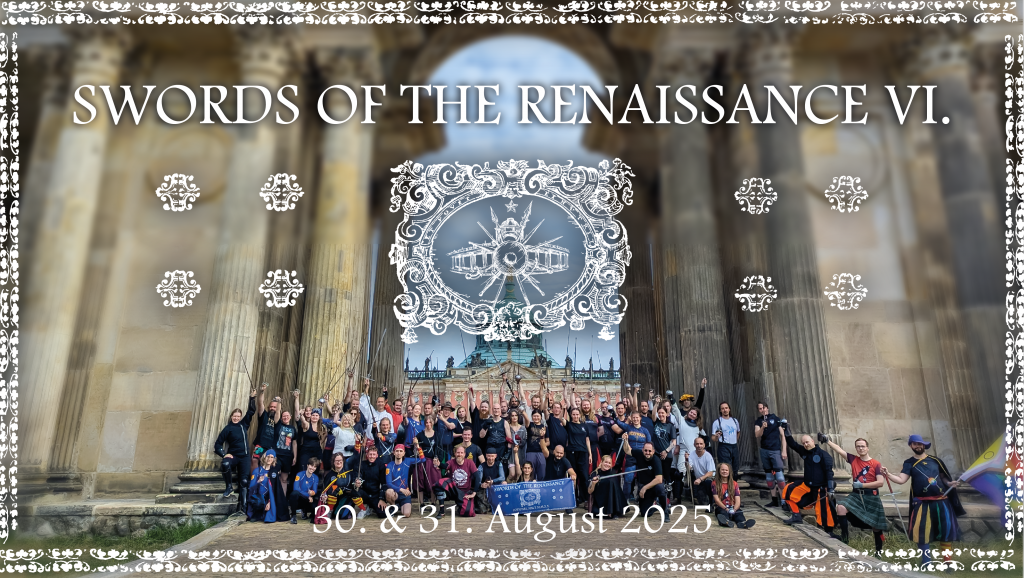
When?
30. & 31. August 2025
Where?
Primary location: Am Neues Palais, Potsdam 14469
Alternative location (in case of weather): Spielsporthalle Kurfürstenstraße (Kurfürstenstr. 48, 14467 Potsdam)
What?
This event is dedicated to the diverse fighting styles and weapons of the Renaissance period. Our goal is to offer both an overview and a space for focused exchange, experimentation, and learning. In 2025, we’re introducing a new structure to better connect experts and enthusiasts around specific topics.
Morning Sessions
We’re keeping the proven format: two invited instructors will each offer two 90-minute workshops.
Each workshop will be held twice, so all participants can attend both without having to choose.
Afternoon Sessions – Break-Out Tracks
Instead of classic headliner workshops, the afternoons will feature themed tracks with specialized mini-workshops, talks, and demos in smaller groups.
Tracks may include Vadi, Destreza, Sidesword, Fabris, or other traditions.
Each track runs for around three hours and features multiple experts offering 20–30-minute sessions on their unique perspectives.
There’s time between sessions for hands-on practice, discussion, and free fencing.
Workshops remain individual, and participants are free to switch between tracks.
One example: the Fabris Track, where several instructors present short, focused takes on different aspects of Fabris’ fencing.
We aim to create an open and inclusive atmosphere that reflects both the diversity of historical martial arts between the 15th and 17th centuries and the diversity of today’s practitioners.
Prices and Options
Participation in the event costs 80 € for both days or 50 € for a single day. For 15 € per day you can book the popular lunch buffet, and for 20 € you can add an optional event shirt to your registration. The evening programme will be paid individually in cash at the location.
Food & Community
A lunch buffet (as popular as ever!) will be organized again this year. In the evening, we’ll head out to dinner together near the venue.
If the weather is good, the event will be held outdoors and open to spectators.
If it rains, we’ll move inside and keep it cozy and relaxed.
Important Note
There will be no tournament or competitive format. This event is all about shared learning in a cooperative and friendly environment.
Required Equipment
Minimum: mask, neck protection, and light gloves.
A fencing jacket is also recommended, especially for thrust-focused workshops. Additional protection based on your personal preference is welcome.
We’re looking forward to an inspiring and enjoyable weekend with you – filled with great fencing, great food, and great people.
See you in Potsdam at Swords of the Renaissance 2025!
Timetable:
| Saturday | Sunday | |||||
|---|---|---|---|---|---|---|
| Ground I | Ground II | Ground III | Ground I | Ground II | Ground III | |
| 9:00 – 9:30 | Registration | Waking-Up | Open-Ground | |||
| 9:30 – 10:00 | Welcome & Warm-Up* | Warm-Up* | ||||
| 10:00 – 11:30 | Guy Windsor “Attack with Capoferro!”: how to get in and get out when fencing with rapiers! | Jack Parkinson Learning to see with our hands | Open-Ground | Vera Martocchia Unravelling Renaissance Guards: Tactical Insights into Becca with Sidesword | Guy Windsor Playing from the crossing: lessons from Philippo Vadi | |
| 11:30 – 11:45 | breather | breather | ||||
| 11:45 – 13:15 | Emilia Skirmuntt Abrazare: Like a Flower of Battle | Vera Martocchia Unravelling Renaissance Guards: Tactical Insights into Becca with Sidesword | Jack Parkinson Learning to see with our hands | Emilia Skirmuntt Turning the Blade: Cavazione and Girata in the Italian Rapier Tradition | ||
| 13:15 – 14:15 | Lunch | Lunch | ||||
| Breakout-Tracks | Rapier+ | Bolognese | How to improve your Club/Training | Looking at Swords | Fun with Fabris | Two-Handed Swords |
| 14:15 – 14:45 | Damian Matuszewski Stringere: What? How? And why? | breather | Melissa Kleiß Motivation as a Training Strategy | Lecture: 101 rapiers and their geometry | breather | Floris Gerber Footwork to follow in the bind |
| 14:45- 15:15 | breather | Martin Höppner Stringere the Bolognese Way – Pressure, Control, and the Art of Forcing Choices | breather | breather | Viktoria Chudinov Managing complexity:the case of Proceeding with Resolution | breather |
| 15:15- 15:45 | Martin Svedberg An artful guard to defend against furious passes, from the right or left foot | breather | Guy Windsor Boredom and Frustration: why students quit and how to avoid it | Ulrich Langbehn Q&A: Making Swords | breather | TBA |
| 15:45- 16:15 | breather | Daniel Tallarek Kissing swords – Getting intimate in Mezza Spada | breather | breather | Cornelius Berthold Workshop: Move your body, not the arm | breather |
| 16:15- 16:45 | Jesse Gerdes Why the short sword is the truly superior weapon | breather | Emilia Skirmuntt Lecture: Why Diversity Matters in Martial Arts | Elisa Deiß Talk/Q&A: Leatherworks and Sheath Making | breather | TBA |
| 16:45- 17:15 | breather | Stephan Eickelmann Zufechten?… Make an Entrance! The Elegant Way to Start a Fight | breather | breather | TBA | breather |
| 17:45- 19:00 | Open-Ground & Discussion | Malte Zacharia Jugger – because fighting in groups is fun! | Farewell | |||
| 19:30 | Social Event: Bar & Pizza | |||||
Our workshops (90 min):
Playing from the crossing: lessons from Philippo Vadi
In this class we will establish the basic movement style of Philippo Vadi’s longsword play, and look at ways the crossing can occur. We will then work on several of Vadi’s continuations from the crossing, beginning with the first play. If there are specific plays from the source that you’d like to cover, just ask.
“Attack with Capoferro!”: how to get in and get out when fencing with rapiers
The essence of Capoferro’s rapier fencing is to recognise the tempo: when is it safe to strike? Ideally, you will just walk in and stab your opponent, who won’t strike back. But in the real world you need to be able to get into measure carefully, recognise the presence or absence of a tempo, and either get back out, or strike and get out. In this class we will cover the basics of how to enter, and look at a variety of ways of remaining safe by using measure after the strike.
Warm-ups
Join Guy as he gets his 50-year-old carcase ready for a day of historical fencing. We’ll begin with a survey of all the joints, get moving gently, and build up to the ranges of motion we will need for the arts we practice. If you have your own routines that work for you, you are encouraged to incorporate them into your session.
Break-out: Boredom and Frustration: why students quit and how to avoid it.
More infos below in the Break-out tab.
About the instructor: Consulting Swordsman Dr. Guy Windsor is acclaimed and respected both as a teacher and a pioneering researcher of medieval and renaissance martial arts. He began his professional historical martial arts career when he founded The School of European Swordsmanship in Helsinki, Finland in 2001. Awarded a PhD by Edinburgh University for his seminal work recreating historical combat systems, Guy has written numerous books for historical martial artists, such as The Medieval Longsword, The Medieval Dagger, From Medieval Manuscript to Modern Practice: the longsword techniques of Fiore dei Liberi, The Art of Sword Fighting in Earnest, The Duellist’s Companion, The Swordsman’s Companion, The Theory and Practice of Historical Martial Arts, The Rapier Workbook series, and The Armizare Workbook. His latest book is From Medieval Manuscript to Modern Practice: the wrestling techniques of Fiore dei Liberi.
He has traveled the world as an in-demand teacher and lecturer, and even developed the card game Audatia – bringing the thrills of historic swordfighting to the modern gaming audience. He has also created a huge range of online courses, covering medieval knightly combat, sword and buckler, rapier, remedial training, and even how to train alone. Now, Guy splits his time between researching historical martial arts; writing books and creating online courses, teaching students all over the world; and working as a consulting expert. He runs the popular historical martial arts podcast The Sword Guy, interviewing historical martial artists and experts from a wide range of related disciplines.
You can find him and his work online at swordschool.com
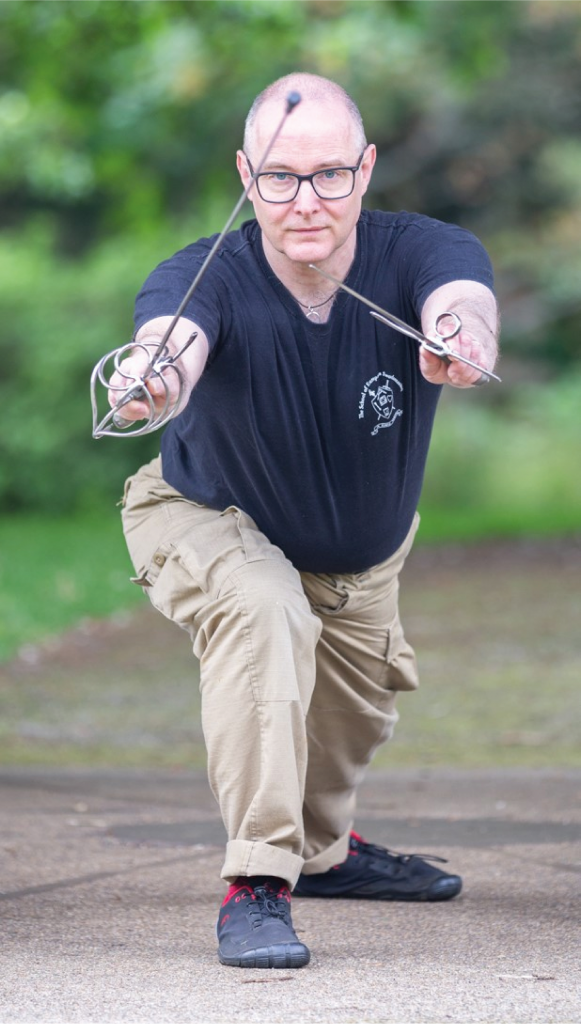
Learning to see with our hands
We’ll be looking at Thibault’s system of sentiment, and learning how to see with your hands,
We’ll explore how it informs his rapier plays, and then distill the principles so It becomes a concept you can apply to all of your martial studies.
About the instructor: Jack has been training HEMA for nearly a decade and is one of the founding instructors of Swordpunch. Over this time he has studied a broad and diverse selection of historical sources, taking a particular interest in La Verdadera Destreza, and works by authors of the 16th century such as Achille Marrozzo, Joachim Meyer, and Domingo Luis Godinho
Beyond sword fighting, Jack is an avid musician, loves gaming and playing Dungeons & Dragons. More Infos
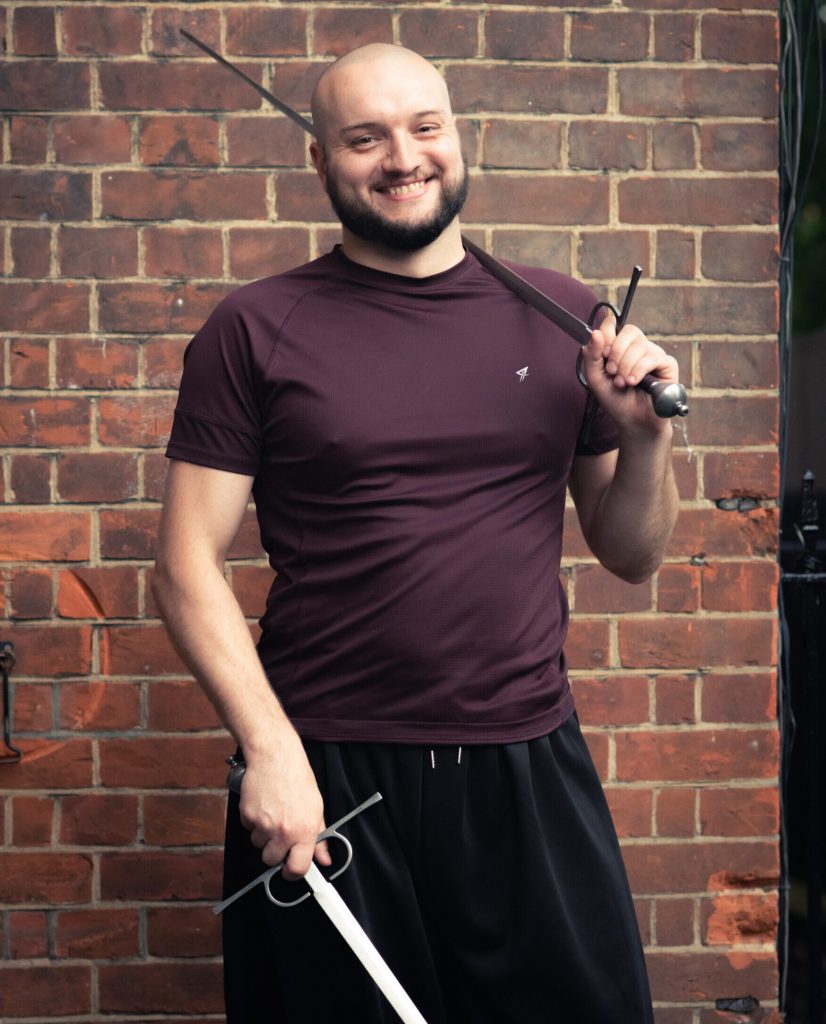
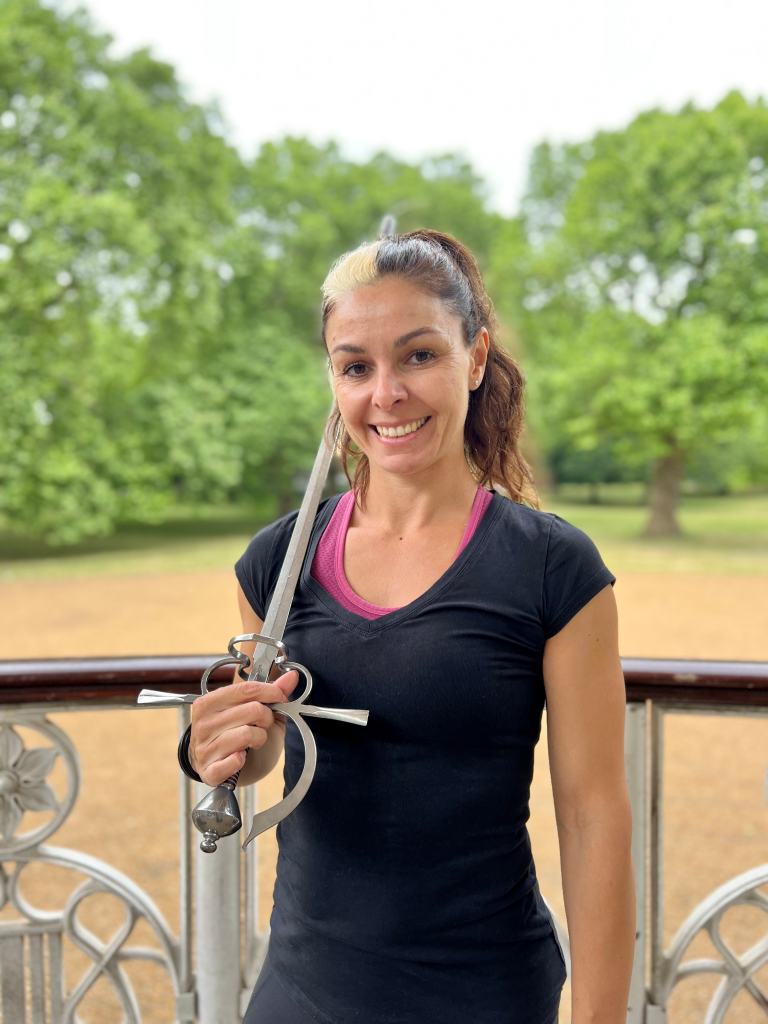
Unravelling Renaissance Guards: Tactical Insights into Becca with Sidesword
In this workshop we will explore the beak guard in Renaissance Sidesword, comparing it to similar positions such as Unicorn and Ox.
Drawing from key Italian sources such as Marozzo, the Anonimo, and Dall’Agocchie, we’ll examine the structure, strengths, and vulnerabilities of this guard.
Through focused drills, participants will engage in both offensive and defensive actions, as well as learn how to counter it effectively. The session combines historical insight with practical application. All levels welcome.
Minimum equipment:
About the instructor: Vera is a professional sword fighting instructor with over eight years of experience in Historical European Martial Arts (HEMA). She trains and teaches a wide range of weapons, including Sidesword, Longsword, Dagger, Sickle, and more drawing on historical sources such as the Anonimo, Marozzo, Meyer, and Huntfeld. Her approach combines historical depth with practical application, emphasising both precision and flow. Known for her dynamic teaching style and thoughtful instruction, Vera makes HEMA concepts accessible to students of all levels. She regularly teaches classes and seminars across London and beyond.
In addition to her martial practice, Vera is a certified fitness professional with over 16 years of experience. She holds advanced certifications in Les Mills BodyCombat™️, BodyBalance™️, Pilates, and children’s fitness, integrating strength, balance, and body awareness into her sword instruction.
Fluent in several European languages, Vera brings a diverse and international perspective to her work. She now lives in London with her family, and her swordsmanship reflects a lifelong passion for movement, teaching, and people. More Infos
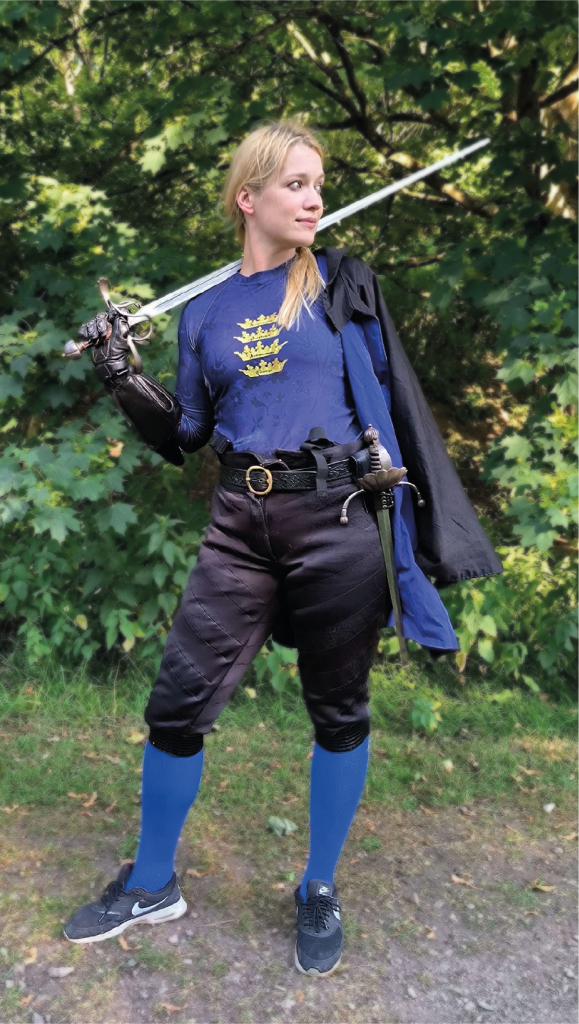
Abrazare: Like a Flower of Battle
Fiore dei Liberi was a 14th-century knight, diplomat, and fencing master who created one of the first known fencing manuals, Flos Duellatorum (The Flower of Battle). In his manual, he describes techniques using all known „knightly weapons“ like the sword, axe, dagger, and unarmed fighting, as well as both fighting in armour and without it. During this workshop, we will look at Fiore’s longsword techniques and discover that even while being smaller and weaker than our opponent, we can still overpower them using appropriate body mechanics.
Equipment: Comfortable, loose-fitting clothing that allows you to move freely.
Turning the Blade: Cavazione and Girata in the Italian Rapier Tradition
In this session, we dive into two essential mechanics of the single rapier — the cavazione (disengage) and the girata (turn of the body). These core actions allow a fencer to control the line, evade opposition, and deliver precise counters with both grace and efficiency. We’ll explore their execution, timing, and integration within the Italian tradition, helping you refine your bladework and movement for both offence and defence. Ideal for intermediate fencers looking to deepen their technical and tactical understanding.
Minimum equipment: rapier, mask, jacket, gloves
Break-Out Lecture: Why Diversity Matters in Martial Arts
More infos below in the Break-out tab.
About the instructor: Emilia has trained how to hit people with swords and other objects for more than 20 years. During that time she has studied multiple weapons, systems, and in multiple different clubs, starting in Poland and then moving to London and Oxford. She has won medals in both women as well as open competitions both in the UK and abroad, fighting with longsword, rapier, rapier and dagger, saber, sidesword, and sidesword and buckler. She was also voted best technical fencer of By the Sword 2019. Emilia travelled around Europe leading workshops and seminars and was one of the representatives for the UK and Ireland HEMA team in the European Games taking place in Minsk in 2019. She is a member of the organising committes for the Wessex League, and Albion Cup, the biggest international competition in the UK. She also organised English Sidesword Open In Oxford in 2018. Currently she is the head instructor for the Oxford Chapter of The School of the Sword. She teaches Italian longsword, dagger, rapier, sidesword, unarmed, and tomahawk techniques.
Our break-out sessions (~30 min):
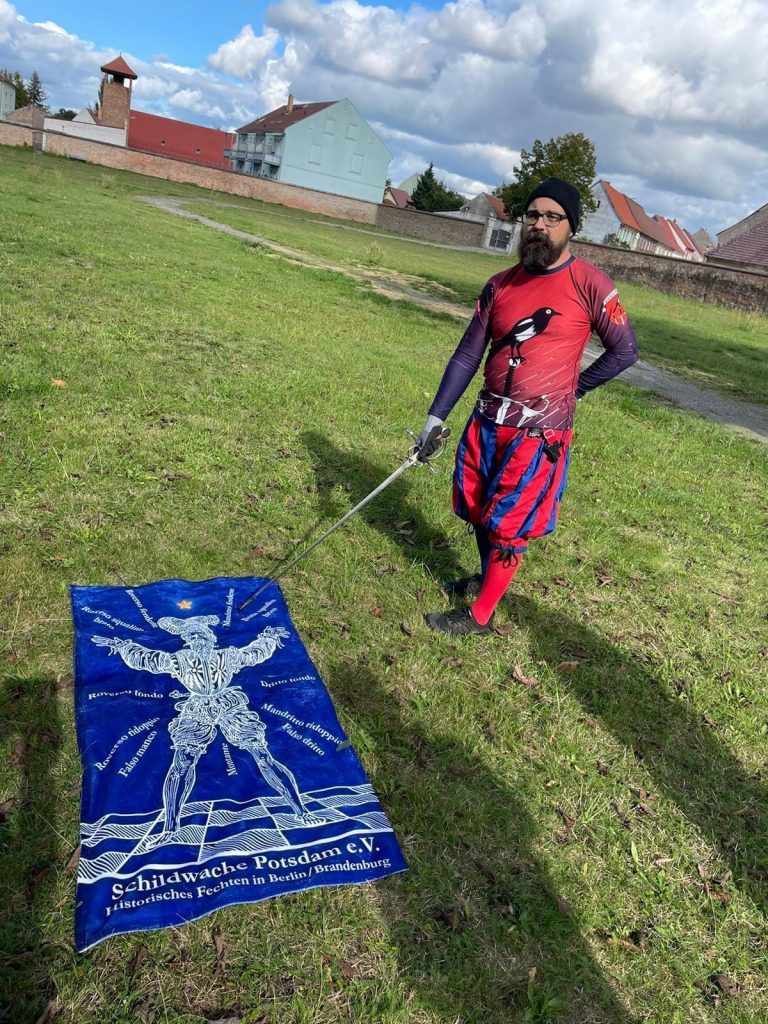
Kissing swords – Getting intimate in Mezza Spada
This short workshop focuses on the transitional phase of Mezza Spada – the point where blades meet and close play begins. Using material from Francesco Altoni, Antonio Manciolino, and the Anonimo Bolognese, we will examine a small selection of techniques that lead from the bind into close combat, including presa, beats or even kicks. We will also look at basic defensive responses to these actions. Due to the limited time, the emphasis will be on understanding core principles rather than extensive application. Participants should be prepared for controlled partner exercises at close range.
Minimum equipment: some kind of one-handed sword, light gloves and masks
About the instructor: Daniel has been practicing HEMA since 2021, starting with Tokugawa in Cottbus before quickly founding his own group with close friends in Finsterwalde, which later became an official club – HEMA Finsterwalde e.V.. He is proud to have brought historical fencing to a rural part of eastern Germany and to help it grow there. His main focus lies in the diverse and elegant techniques of the Bolognese tradition, with its rich variety of weapon combinations and tactical depth. He values the open and supportive HEMA community and actively maintains contact with fellow clubs through workshops and events. Alongside regular training, he takes part in tournaments—and would warmly welcome the introduction of senior (48+) divisions, if only to have a fighting chance at making it onto the podium.
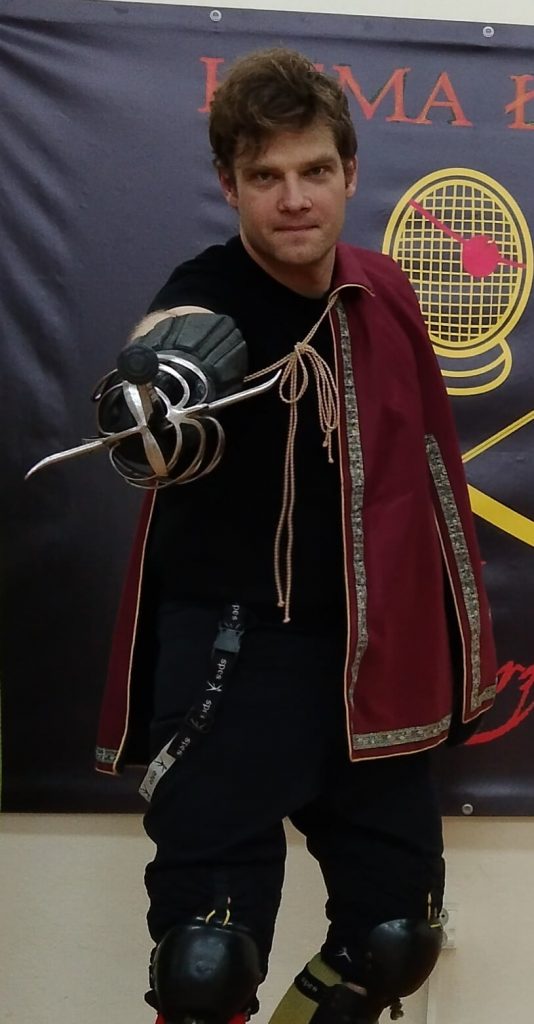
Stringere: What? How? And why?
In this short workshop, we will focus on stringere – the pivotal term of the Italian rapier. I will demonstrate the profound importance, and practical implications hidden in this single word. Minimum equipment: rapier, mask, glove
About the instructor: Damian started his HEMA adventure at Uppsala Historical Fencing School in 2014. After a few years he became a longsword, rapier, and sabre instructor there. His main interests are Polish sabre and Italian rapier. He won several medals, including silver in sabre at the Swedish HEMA National Championships, but his most cherished achievement is winning the “Best Technical Fencer” Award at the International Rapier Seminar in 2023. That year he also started his own school in Poland: HEMA Łódź Korsarze. Aspiring to be as versatile as the sword masters of the late Renaissance, he recently extended his teaching portfolio with montante (since 2024) and Bolognese sidesword (since 2025).
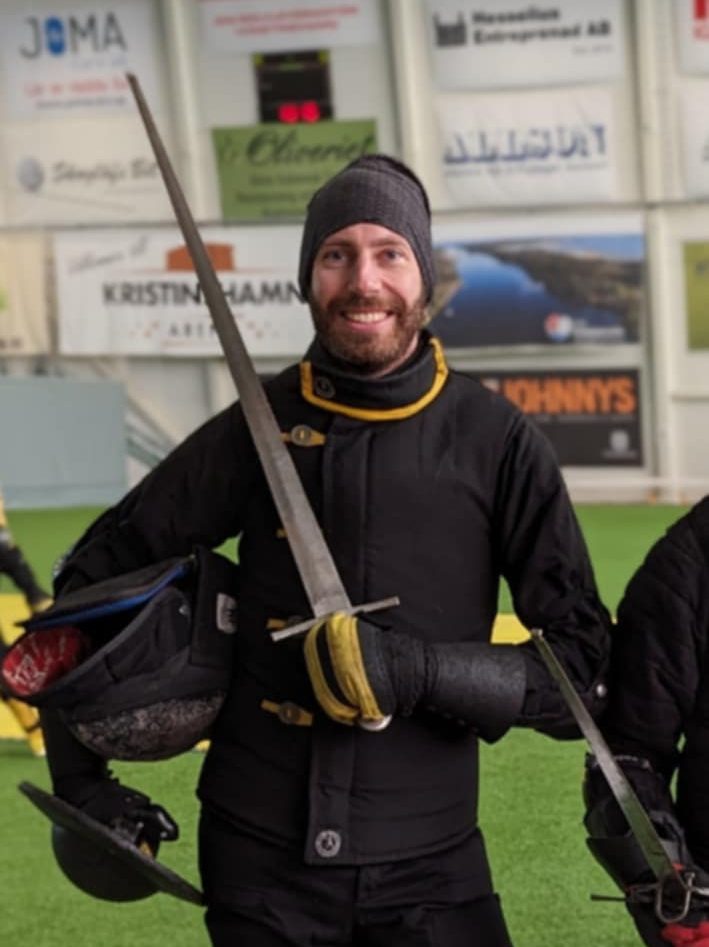
An artful guard to defend against furious passes, from the right or left foot
In this session we will have a look at one of the plays from Gigantis second treatise. It illustrates how Giganti recommends the use of deception to deal with an opponent stronger and more agile than oneself. By correctly reading the opponents intent you are able to choose a guard inviting the opponent to attack in a way that you are well prepared to counter.
About the instructor: Martin discovered HEMA in 2014 and has been training at Uppsala historiska fäktskola since then. He started with longsword (mainly Ringeck) and sword and buckler (I.33) before branching out to other weapons. Eventually he was introduced to rapier fencing and the texts of Nicoletto Giganti which became favourites. Martins favourite thing in HEMA is doing lots of free sparring just for the joy of fencing but he also has experience competing in a variety of weapons and regularly instructs at the club in Uppsala.
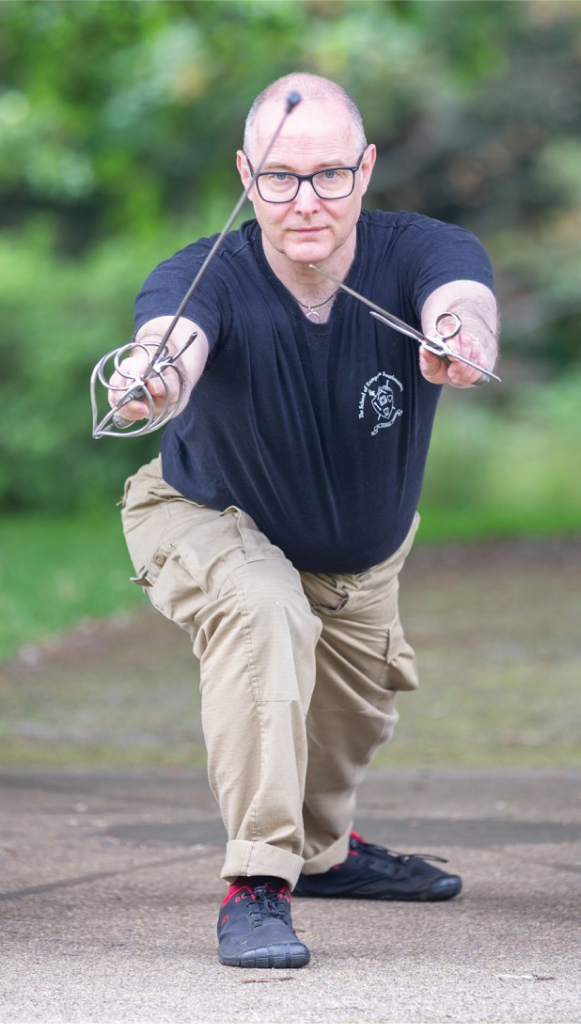
Boredom and Frustration: why students quit and how to avoid it.
Assuming your club culture is welcoming, and your marketing efforts are clearly representing what you do, the usual reason students will quit is because they are either bored (the classes are too easy) or frustrated (the classes are too challenging). In this mini-class we’ll cover ways to keep your students motivated by adjusting the difficulty level to ensure they are training at the optimum rate of failure.
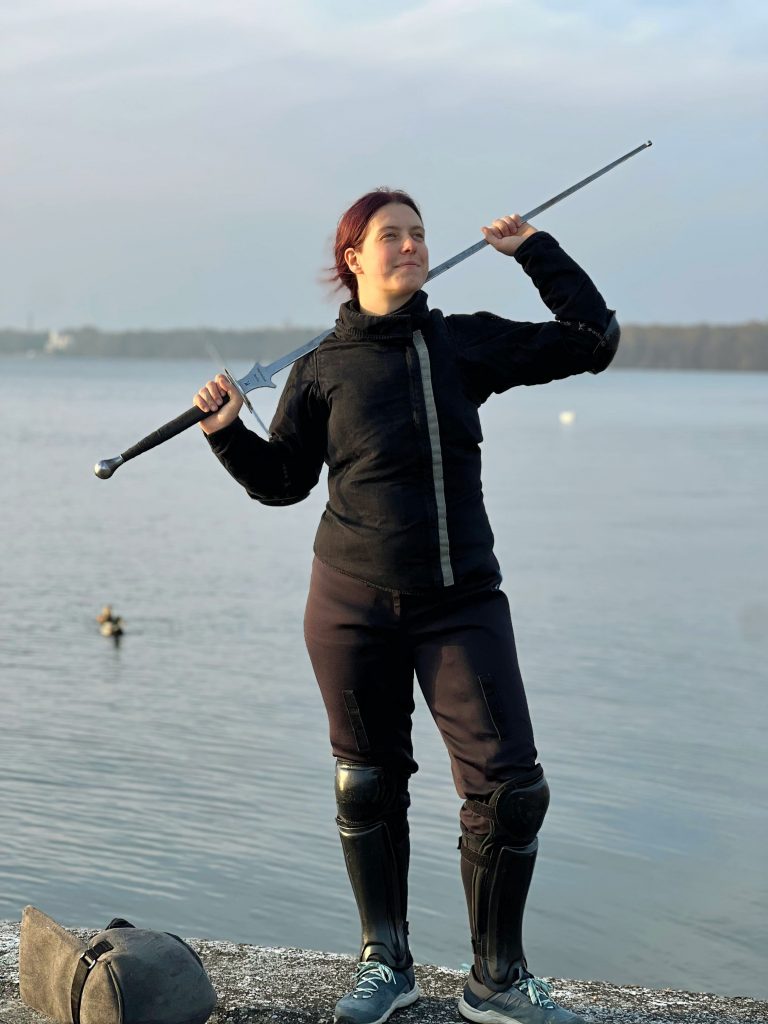
Motivation as a Training Strategy
How can we stay motivated in the long run? Why are games so great to train fencing? This workshop is designed for experienced fencers and coaches who want to actively integrate motivational aspects into their training.
We will explore Motivation Theory and its core elements – autonomy, competence, and social relatedness – and develop strategies to apply them in personal training, season planning, and overall training design.
Due to limited time, we will mainly cover the theoretical background and discuss brief examples. Further information will be summarized in a handout.
We will create concrete exercises and approaches that help maintain long-term motivation and enjoyment in fencing.
About the instructor: [Link]
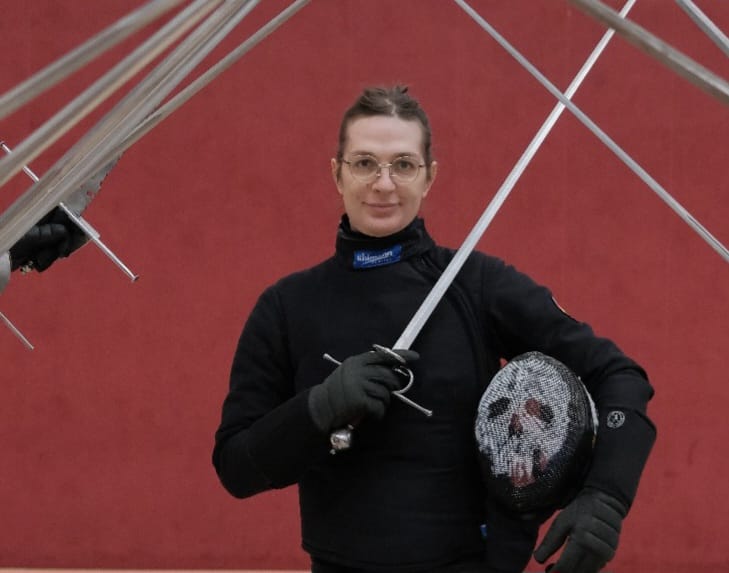
Managing complexity when coaching and fencing: the case of Proceeding with Resolution .
The proceeding with Resolution of Salvator Fabris is arguably one of the most advanced and nuanced approaches. When teaching this to students we have to find ways to convey both many fine details, but also build up tactical concepts and keep the student grounded in the real world. All this places a considerable amount of cognitive load on the student and can easily be overwhelming. In this little workshop we will chat how to handle that. We will look how the ecological approach can help here, throw in some theory and fancy words like feedback loops and variety. You will even hear me making the argument that the old man himself usedsomething that can be considered EA if you squint hard enough.
Format: a mix between talking and showing a few exercises, some Q&A in the last five mins
Gear: a weapon is enough. A cup of coffee to stay warm, cozy and awake.
Level: Unfortunately, not very suitable for beginners.
About the instructor: Victoria is teaching HEMA in Københavns Fægteklub in Copenhagen Denmark. She has been fascinated with swords ever since she could pick up a stick without poking her eye out, and has been doing HEMA for the last 15 or so years with emphasis on the rapier (and a little longsword on the side). Her main interests are in Salvator Fabris and Thibault D’Anvers, but really any fencing that departs from the conventional and well-tested path, has dirty tricks, pocket sand, beer mugs or just looks cool.
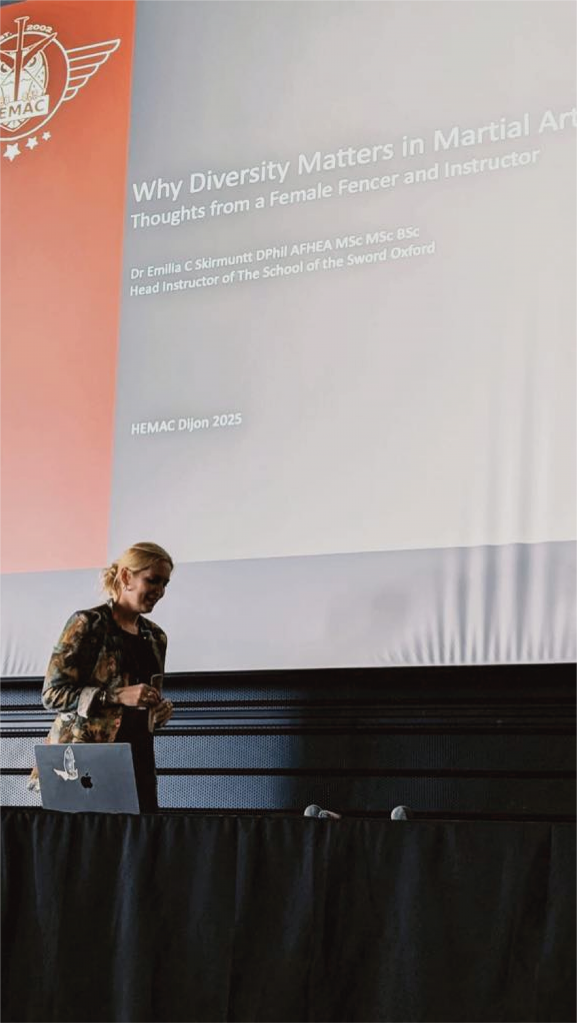
Lecture: Why Diversity Matters in Martial Arts
This lecture explores how diversity enriches martial arts communities — strengthening both skill and spirit. We’ll discuss how inclusive spaces foster creativity, resilience, and broader perspectives, and how welcoming people of different backgrounds, genders, ages, and abilities helps preserve and evolve our arts. By embracing diversity, we don’t just build better martial artists — we build stronger, more vibrant communities.
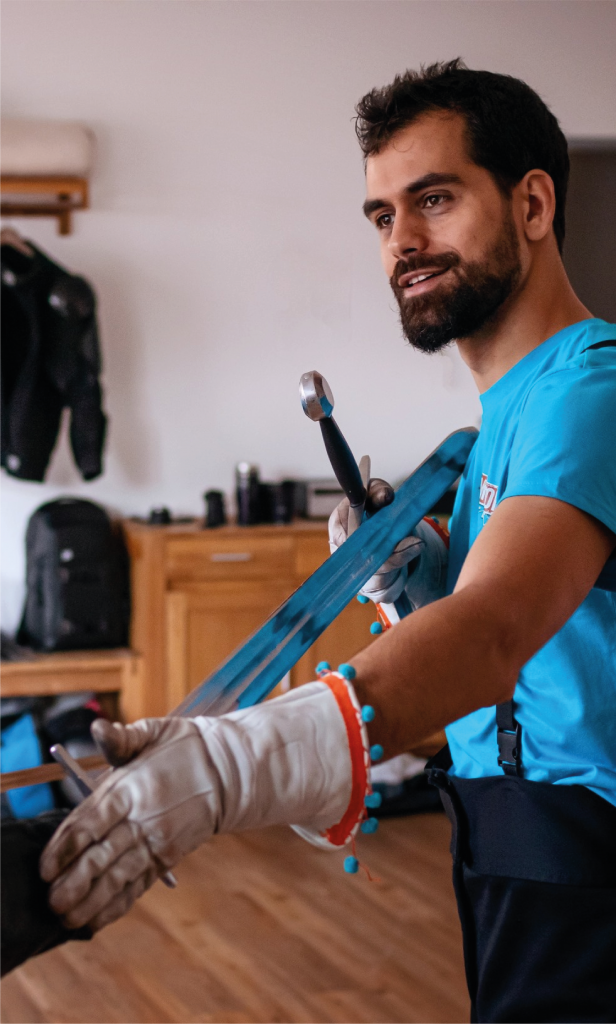
Move your body, not the arm
The art of fighting described by Salvator Fabris and his students is meticulously calibrated: the body movements they suggest only work really well with the timing framework presented – and vice versa. One of its peculiarities is that the rapier is supposed to be moved as little as possible. To remain protected, a Fabrisian fencer would rather shift their entire body than move their hand. This class will combine securing the opponent’s blade, advancing and making decisions at the right moment in a series of tightly built partner lessons and drills. Technically, it will be simple enough even for beginners, but it pays off to have some experience with Fabris’s rapier system.
Required gear includes a 1600 N fencing mask, gorget and enough chest protection for repeated hits. All training rapier blades should have widened tips and flex at 7.5 kilograms or less.
About the instructor: Cornelius is the head of Dimicator Schola and has been involved in fencing since 2004, starting with sport fencing (which he still practices today) before finding his way into historical fencing through medieval reenactment. He trained historical wrestling, dagger, and longsword with the Bloßfechter in Chemnitz, and has since taught sword & buckler (MS I.33), 19th-century military sabre (August Fehn), and early 17th-century Italian rapier (Nicoletto Giganti). Since 2016, he has been fencing and teaching in Hamburg, including with Dimicator. A licensed C-level sport fencing coach, Cornelius focuses on effective and healthy body mechanics, precision in fencing movements, and -without contradiction- playful exercises that go far beyond mindless repetition.
101 rapiers and their geometry
Based on the measurement of over 100 rapiers from the holdings of various museums, we can provide an analysis of the dominant geometry of rapiers. For example, which blade-, handle lengths and balance points prevailed and how this differed depending on the location. We will take a closer look at some pieces, such as a training rapier from the early 17th century. After a brief look at the methodology, we look at the data collected and what results we can draw from it. The lecture will be rounded off with the opportunity to handle a German rapier from 1600 yourself.
Minimum equipment: Paper and Pen
About the instructor: Dennis began Olympic sabre fencing at age 15 and moved into Historical European Martial Arts (HEMA) at 22. Since 2022 he has served as the deputy chair of Schwertgreifen Rostock e.V., and in February 2025 he became the DDHF Vice-President for Education and Research. In 2023 he was rapier vice-champion and placed in the top ten of the HEMA Score for open sabre. His current focus is on research.
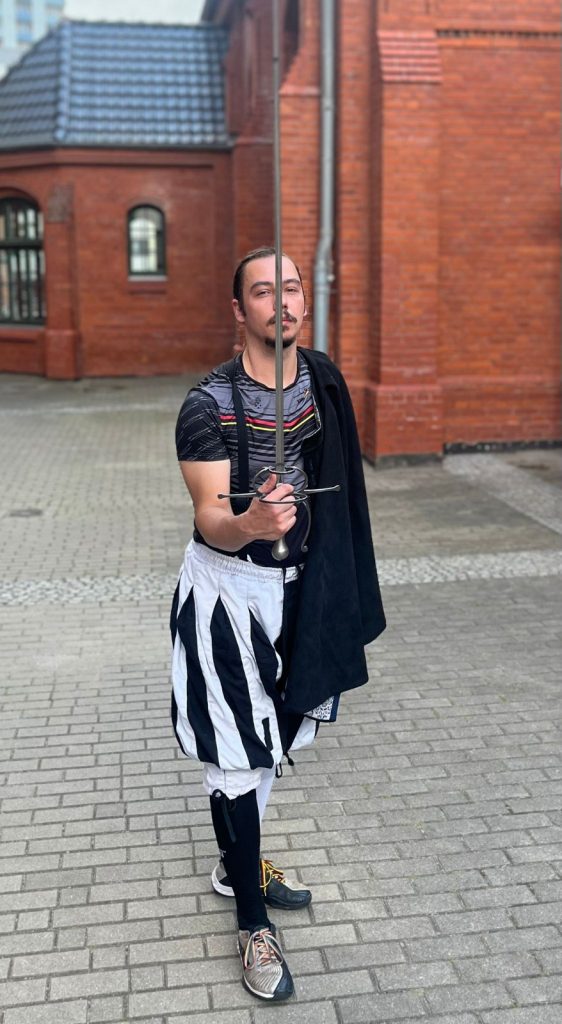
Engineering meets the Art of the Sword
Minimum equipment
About the Artisan: Ulrich Langbehn, 70 years young, brings decades of experience as an engineer and senior executive in the automotive industry into a very different craft: the making of historical swords.
For over ten years, he has specialized in the reproduction of Renaissance-era weapons – particularly battlefield swords and rapiers. His pieces are not only technically precise but also deeply rooted in historical authenticity.
Langbehn’s work has been exhibited in Solingen and at numerous fencing seminars and HEMA events across Europe. Each sword reflects a blend of craftsmanship, historical knowledge, and mechanical expertise – forged with passion and precision.
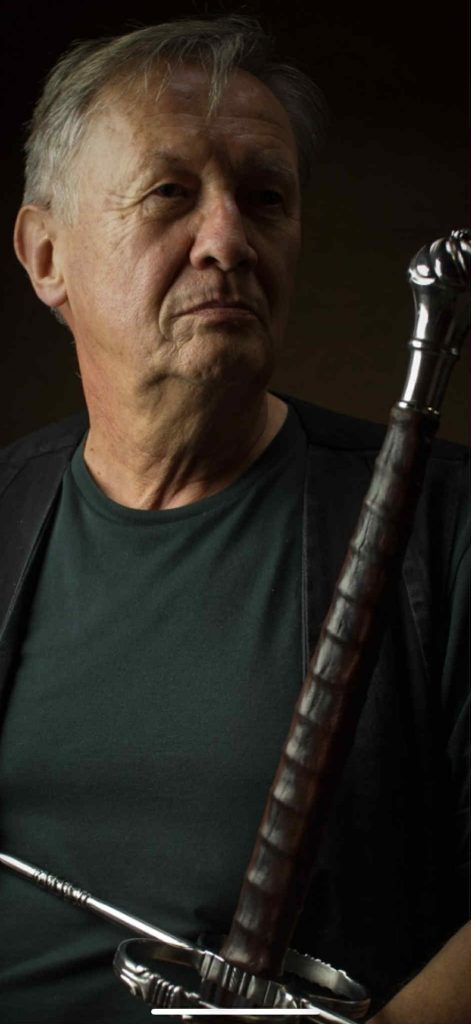

Why the short sword is the truly superior weapon
George Silver, HEMA influencer, created one of the earliest tier lists of HEMA weapons. On the top we find most of the pole arms and at lower tiers the poignard and the two-handed sword. However, Silver focusses mostly on the comparison between the short sword (triple S tier) and the rapier (F tier). In his work he goes into deep detail why them so is. In this workshop we will test the claims of Silver if the short sword is truly the superior weapon to the rapier. For the workshop you will need a rapier, preferably with a long blade, and a short sword (side sword, arming sword, Messer or backsword). Fencing gear is useful but not needed.
About the instructor: [Link]
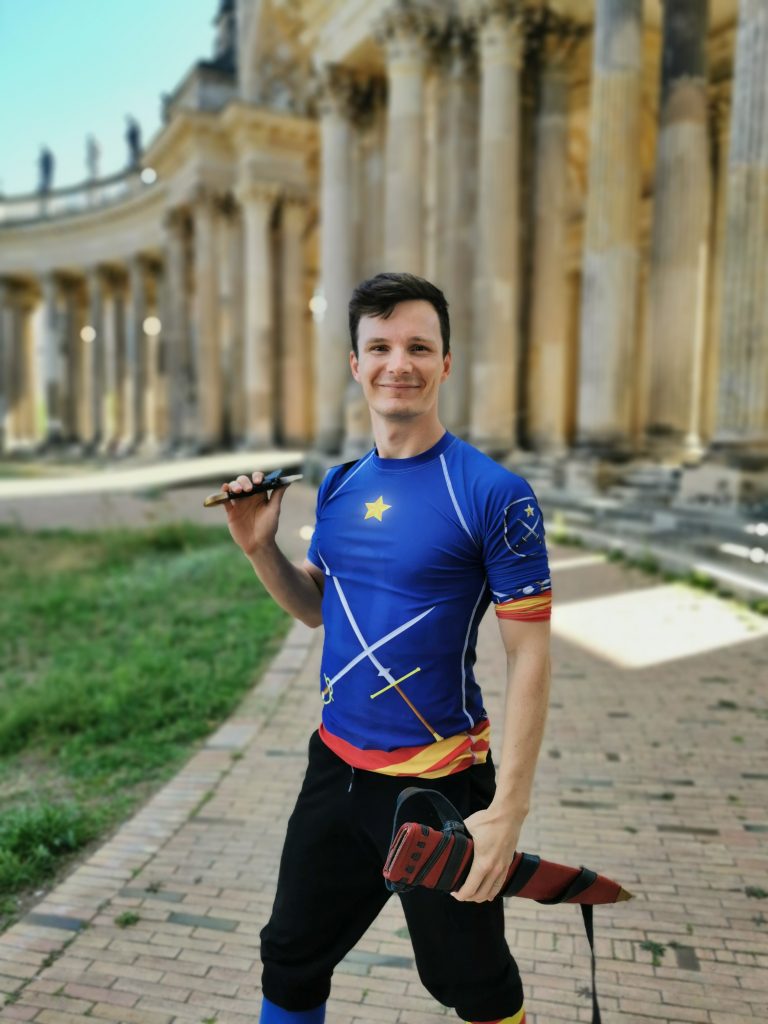
Stringere the Bolognese Way – Pressure, Control, and the Art of Forcing Choices
In the Bolognese fencing tradition, stringere is more than just “closing the line”—it is the art of applying subtle yet relentless pressure to dictate your opponent’s next move. By mastering this principle, you can drive your adversary into a narrow set of responses: attack along predictable lines that you are ready to counter, or retreat under the weight of your presence.
This workshop will explore the mechanics of Bolognese stringere through guard positions, footwork, and blade alignment, showing how to create psychological and tactical dominance before a single blow is struck. Participants will learn how to:
- Establish threatening lines that control the opponent’s options
- Maintain initiative through measured pressure and timing
- Convert predictable attacks into decisive counterattacks
- Use stringere as a tool not only of safety, but of authority
Open to practitioners with at least a basic familiarity with the sidesword, this session offers both historical insight and practical drills to bring the Bolognese art to life.
About the instructor: [Link]

„Zufechten?… Make an Entrance! The Elegant Way to Start a Fight – Bolognese Style“
This workshop explores how to enter the fight with elegance, style, and tactical awareness. Rather than simply rushing in to close distance and trading the first blows, we’ll embrace the Bolognese version of „Zufechten“ , a dynamic and expressive entry into the fight that impresses visually and sets the tone strategically.
With a one-handed sword and an optional companion weapon such as a buckler, targa, shield, or dagger, participants will practice how to apply pressure from the very first steps while maintaining control over distance and tempo. Because looking fabulous and fencing efficient aren’t mutually exclusive, especially in the Italian tradition.
Required gear: One-handed sword (e.g. armingsword, sidesword, meyer-rapier, or similar), Mask, throat protection, gloves
About the instructor: [Link]
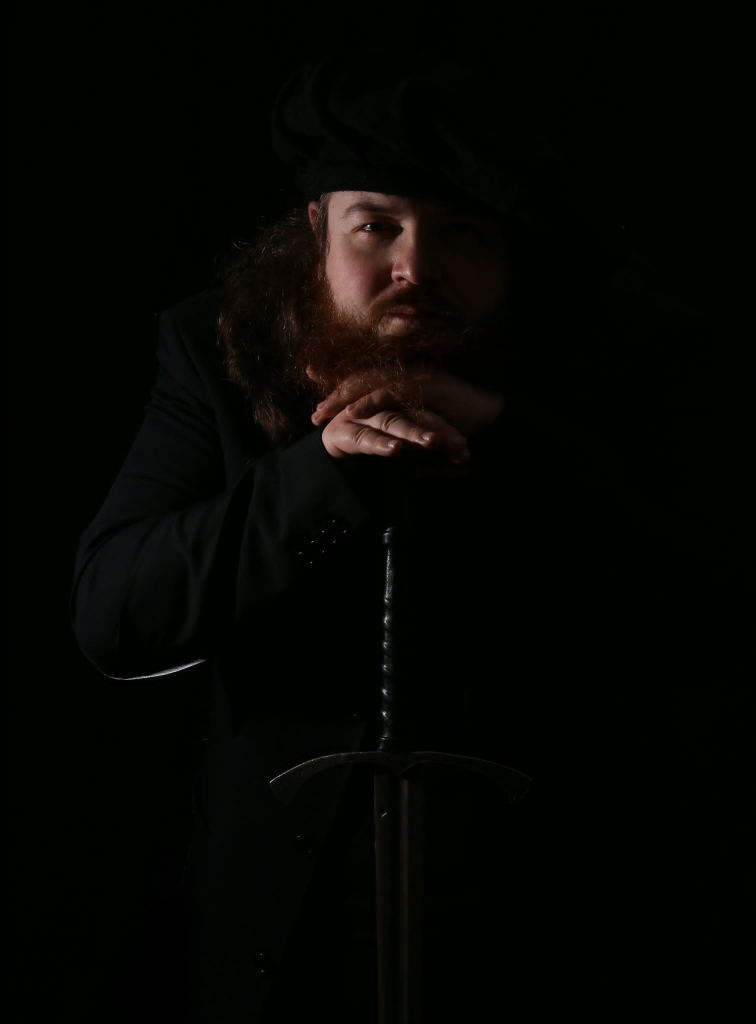
Footwork to follow in the bind
Once we establish a dominant bind, our opponent will likely react by retreating. That Blackguard! Possibly not even on a straight line! Oh the infamy… We shall have a look at a useful little example and explore how to use footwork to cascade our dominant bind into ever stronger positions, dealing with some of the more interesting ideas our opponent could have on our way in.
About the instructor: Floris Gerber started martial arts at the age of six and hasn’t stopped in the past 30 years. For the last 12 years, Floris has been fencing and teaching with the Jacamart group in Berlin, specializing in the longsword, binding plays, and close measure.
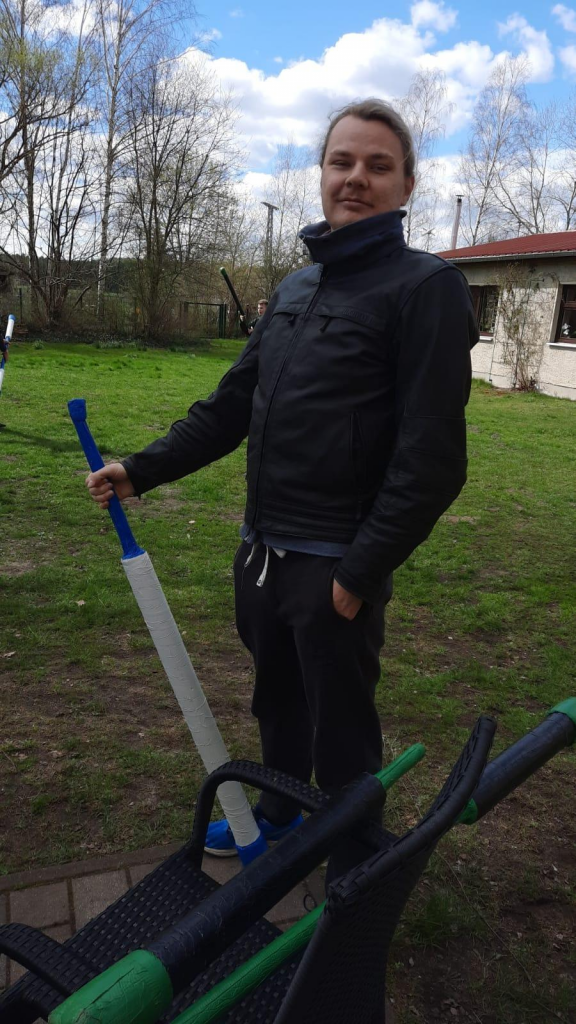
Jugger – because fighting in groups is fun!
Based on a movie from the 70s, this sport challenges your situational awareness and speed in an exchange.
Most team sports like football require you to score points and run back and forth across the field. Jugger is similar – except you play with weapon-like objects! Only one member of each team can touch the ball (the “jug”), while the others must protect their runner and take out the opposing team.
Essentially, it’s a lighthearted game that requires you to think fast and act quickly – because if you focus too much on one opponent, another might tag you while you’re unprepared.
And since it’s still far too unknown and underrated, we’re going to enjoy it together. You’ll also find many HEMA-adjacent skills in this sport, such as endurance, quick reflexes, and the ability to avoid doubles.
About the instructor: Malte began his HEMA adventure in 2022, when he finally moved within driving distance of a club – Schildwache Potsdam. Since then, he has focused mainly on sidesword and rapier and is currently part of the German national rapier team.
As a teenager in Lower Saxony, where HEMA clubs were few and far between, Malte turned to Jugger instead. He has built multiple sets and even “trained” a youth group in Berlin for two years.
The Location:
